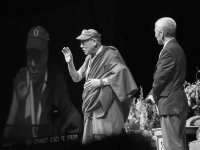mingkookoo
Well-known
Just used it a few days ago with Mount A12 and Voigtlander 21/4 Color Skopar. I still enjoy this little camera 
Cheers

Ricoh GXR Mount A12/ Voigtlander 21/4 Color skopar by David Lam, on Flickr
Cheers

Ricoh GXR Mount A12/ Voigtlander 21/4 Color skopar by David Lam, on Flickr
Cathy Withakay
Newbie
I use the GXR regularly, carry a CV 40 / 21 / Minolta 90 as a compact kit.
d30gaijin
Noctilusting
Well we're well past 2020, past 2021, and now into 2022 (I mention that based on the thread title) and I am still using my GXR-M mount. In fact I have been for about 10 years now. Once I found out Ricoh was discontinuing the GXR series I bought a complete spare camera/M module to have as a backup in case my first one cocked out. Then I got to thinking maybe I need a spare for the spare so bought another along with two EVFs when the GXR system was being closed out. Love the camera. I use it in conjunction with my Leica M Type 262 when I need a bit more reach. They pair nicely for me. Glad to see others here still using theirs (I haven't been on the Forum in quite a while).
Cheers
Don
Cheers
Don
zuikologist
.........................
Welcome back to the forum 
I did the same and have two bodies, two evfs and multiple modules. The build quality is excellent and ergonomics typically Ricoh excellent. I can fit a body, M module and one of the smaller sensor modules plus two M lenses into a hard case like a Pelican, about 8in X 6 in size. Excellent travel kit.
I did the same and have two bodies, two evfs and multiple modules. The build quality is excellent and ergonomics typically Ricoh excellent. I can fit a body, M module and one of the smaller sensor modules plus two M lenses into a hard case like a Pelican, about 8in X 6 in size. Excellent travel kit.
Archiver
Mentor
Mine is still chugging along, with the M, 28 and 50 modules. I don't use it much, but it is so enjoyable when I do.
In 2010, I went to Japan with a friend and we visited the Ricoh Ring Cube centre in Ginza. Dozens of Ricoh cameras filled a number of glass display cabinets, and a number of GXR images were on display.
 GRDIII - Ricoh Ringcube Building by Archiver, on Flickr
GRDIII - Ricoh Ringcube Building by Archiver, on Flickr
One of them was taken with the 50mm module, a portrait of a young Japanese woman. My friend remarked that he would love to take images like that. In the local shops like Yodobashi Camera, the GXR was on display with a number of modules. You could even pick them up and swap the modules if you wanted.
 GRD3 - GRD and GXR by Archiver, on Flickr
GRD3 - GRD and GXR by Archiver, on Flickr
In 2010, I went to Japan with a friend and we visited the Ricoh Ring Cube centre in Ginza. Dozens of Ricoh cameras filled a number of glass display cabinets, and a number of GXR images were on display.
 GRDIII - Ricoh Ringcube Building by Archiver, on Flickr
GRDIII - Ricoh Ringcube Building by Archiver, on FlickrOne of them was taken with the 50mm module, a portrait of a young Japanese woman. My friend remarked that he would love to take images like that. In the local shops like Yodobashi Camera, the GXR was on display with a number of modules. You could even pick them up and swap the modules if you wanted.
 GRD3 - GRD and GXR by Archiver, on Flickr
GRD3 - GRD and GXR by Archiver, on Flickrzuikologist
.........................
I like the 28mm and 50mm units. Older focusing technology but really nice output.
d30gaijin
Noctilusting
Welcome back to the forum
I did the same and have two bodies, two evfs and multiple modules. The build quality is excellent and ergonomics typically Ricoh excellent. I can fit a body, M module and one of the smaller sensor modules plus two M lenses into a hard case like a Pelican, about 8in X 6 in size. Excellent travel kit.
As I said, haven't been on the forum for quite a while so hope it is OK to post a link to an Amazon deal I found. If not please delete this post. Anyway, speaking of camera bags, I found this nifty little bag on Amazon. I paid US$20 for it but see it is now on sale for US$16.50. I bought two of them (before they went on sale, of course). I have been very happy with them. A great small camera kit tote. I can fit my GXR with 28mm lens, along with two additional small lenses in it... or leave out one lens and load it with batteries and a charger. With the early versions there were some complaints about strap to bag fitting being made of very cheap plastic and breaking. The current version, the one I have, appears to be improved in that respect. But to be on the safe side I simply added an additional nylon cord between the strap and bag should the original plastic bits fail it will remain in tact.
Just thought I'd pass a cheap good deal on to forum members. https://www.amazon.com/gp/product/B07SG271TT/ref=ppx_yo_dt_b_asin_title_o05_s00?ie=UTF8&psc=1
Very happy to see others still love their GXR as I do mine.
d30gaijin
Noctilusting
Mine is still chugging along, with the M, 28 and 50 modules. I don't use it much, but it is so enjoyable when I do.
In 2010, I went to Japan with a friend and we visited the Ricoh Ring Cube centre in Ginza. Dozens of Ricoh cameras filled a number of glass display cabinets, and a number of GXR images were on display.
One of them was taken with the 50mm module, a portrait of a young Japanese woman. My friend remarked that he would love to take images like that. In the local shops like Yodobashi Camera, the GXR was on display with a number of modules. You could even pick them up and swap the modules if you wanted.
So lovely to see such a display. Thank you for sharing them.
When I bought my first GXR-M it was, best I recall, 2011. I had just retired. I had a few digital cameras, the typical Canon and Pentax DSLRs but nothing I felt I could adequately use my collection of old Leica glass on. When I bought the GXR-M and EVF and looked it over and realized it had a magnification increase to assist focus I was hooked. I had several Leica film cameras but no way I could afford an M8 or M9 to use my lenses on. I wanted so bad to use my old glass on a modern digital camera. The GXR-M allowed me to do that within my budget. The first of my vintage Leica lenses I put on the GXR-M was my 1930 vintage 73mm f/1.9 Hektor. What a joy that was to get results immediately, and wow did it open my eyes to the short comings of non-coated vintage lenses. Do not point it anywhere near a bright light source, such as the sun. Wide open gave new meaning to the "Leica look." Pretty sure what they meant was a boatload of low contrast and spherical aberration. None the less I loved the convenience the Ricoh GXR-M gave me. Shoot a few images, pull the SD card, plug it into the computer and enjoy.
Next on the list of "must try" lenses was the early 1930's version of the 28mm f/6.3 Hektor. Another uncoated vintage lens that didn't seem to flare quite so bad as the 73 Hektor. For me digital life was grande! But I still wanted to try my vintage lenses on a full frame camera as they were meant to be used. 2018 brought an unexpected windfall for me to the tune that I could afford a new Leica digital M camera. I did my research and settled on a Leica M Type 262 digital M camera. It was everything I hoped it would be and have seen no reason to upgrade to a later model. I am just a hobbyist photographer so justifying such expensive cameras, well I got away with it once but that's about it for me. Fixed income, wife to answer to, once maybe but that's it.
Still, I find myself using the GXR-M more than I do my digital M Leica. It's one I am not afraid to simply toss in my cheap camera bag and go on down the road seeking happy snaps. Now I mostly pair it with some lovely Voigtlander glass, of the compact variety. I have fast glass but rarely use it. I prefer the smaller more practical for me lenses.
Cheers,
Don
d30gaijin
Noctilusting
BTW, my daily use lens for the GXR-M is the Voigtlander 21mm f/4 Color-Skopar (M mount version). It provides a 35mm FF equivalent of about 32mm and is great for zone focusing. Even at f/4 (wide open) the corners are very crisp. A nice thing about the 21 VC is it is very compact so makes a nice take along setup.
Archiver
Mentor
BTW, my daily use lens for the GXR-M is the Voigtlander 21mm f/4 Color-Skopar (M mount version). It provides a 35mm FF equivalent of about 32mm and is great for zone focusing. Even at f/4 (wide open) the corners are very crisp. A nice thing about the 21 VC is it is very compact so makes a nice take along setup.
I'm most fond of the Voigtlander 25mm f4P, which is close to 42mm on the GXR, the 15mm f5.6 Super Heliar in LTM mount which becomes like a 22.5mm, and the Zeiss Sonnar 50mm f1.5, which is like 75mm. The first two are excellent walkaround focal lengths, and the Sonnar makes the perfect portrait setup. Someone referred to the bokeh as 'poisonous' in a good way, and I completely agree. There's nothing else like that lens and sensor combination.
Godfrey
somewhat colored
I'm most fond of the Voigtlander 25mm f4P, which is close to 42mm on the GXR, the 15mm f5.6 Super Heliar in LTM mount which becomes like a 22.5mm, and the Zeiss Sonnar 50mm f1.5, which is like 75mm. The first two are excellent walkaround focal lengths, and the Sonnar makes the perfect portrait setup. Someone referred to the bokeh as 'poisonous' in a good way, and I completely agree. There's nothing else like that lens and sensor combination.
A 28mm lens on APS-C is near to dead on the same FoV as a 43mm lens is on FF; a 25mm lens nets just a little wider (between 35 and 40 mm equivalent) with 59.2° diagonal coverage (FF: 35 = 63.4° and 40 = 56.8°). A 15mm lens on APS-C is equivalent to just shy of 23.5° lens on FF.
See Rui Salgueiro's field-of-view calculator ... It's the most accurate tool for FoV analysis I've found.
I sold my GXR-M long, long ago now. It was a delightful camera, probably should have kept it.
G
mjc
Newbie
I sold my GXR with M mount and VF and 50mm (macro) a while back. Now I cannot recall why! An error on my part.
rhl-oregon
Cameras Guitars Wonders
The GRDiii led me to the GXR, mainly to use the M module with the lenses I had then—ZM 50/2, Serenar 100/3.5, 85/1.9. I also invested in the EVF, which was a crucial addition to the kit.
The kit zoom that Dourbalistar asks about was meh and dated; I rarely used it. However, the Ricoh 33/2.5 macro was a wonderful APSC lens for the GXR. As others have written, I occasionally miss GXR/M/33/2.5, and I treasure the best shots from that time 11-12 years ago.
I kept the GXR while I shifted to Fuji X and then to Sony A7, but once I had the Kolari mod for the A7 and A72, it was easier to treat these as my M Mount bodies (until I went all in to digital M).
A ZM 50/2 M module shot
A 33/2.5 macro—

33/2.5 AF selfie through shower glass

Serenar 100/3.5 Dalai Lama at UOregon

The kit zoom that Dourbalistar asks about was meh and dated; I rarely used it. However, the Ricoh 33/2.5 macro was a wonderful APSC lens for the GXR. As others have written, I occasionally miss GXR/M/33/2.5, and I treasure the best shots from that time 11-12 years ago.
I kept the GXR while I shifted to Fuji X and then to Sony A7, but once I had the Kolari mod for the A7 and A72, it was easier to treat these as my M Mount bodies (until I went all in to digital M).
A ZM 50/2 M module shot

A 33/2.5 macro—

33/2.5 AF selfie through shower glass

Serenar 100/3.5 Dalai Lama at UOregon

mjc
Newbie
These are wonderful shots!
Its interesting to hear how you progressed from the GXR M to A7 Mod to Digital M. Which one? And how did you find the A7 mod? -- martin
Its interesting to hear how you progressed from the GXR M to A7 Mod to Digital M. Which one? And how did you find the A7 mod? -- martin
rhl-oregon
Cameras Guitars Wonders
Martin, thank you— that period of my life (2012-2016) was toward the end of an unsatisfying university administration job, and during the progress of my first wife’s fatal illness. Photography was my indulgence and escape, so I went from M43 to GR/GXR to XE1 to A7 in those four years. It was a rational progression, technically, toward full frame, though partly in the service of alleviating anxiety and unhappiness.
The GXR’s M-ability was decisive in adopting Fuji then Sony, to be able to use the 35/50/90 M/LTM lenses I used on a M film cameras. But I also acquired at least one native fast AF in each (35/1.4 Fuji, 55/1.8 Sony), and sold the older kits once fully involved with the newer. I shifted to A7II because it could use the TechArt M adapter to autofocus my M mount lenses, and it had been Kolarified (which cures vignetting by M lenses wider than 35mm)
My wife died in 2016 and I retired in 2017. Early in the new life, I bought an MD-262. I also remarried very very happily. Fast forward to M10 Monochrom, which I now use, as well as a CL and an SL2.
And other gear too ;-), but having priced a GXR, A12 M mount and EVF, I know I’m not sentimental enough to spend $1000 on that kit. 10 years later.
The GXR’s M-ability was decisive in adopting Fuji then Sony, to be able to use the 35/50/90 M/LTM lenses I used on a M film cameras. But I also acquired at least one native fast AF in each (35/1.4 Fuji, 55/1.8 Sony), and sold the older kits once fully involved with the newer. I shifted to A7II because it could use the TechArt M adapter to autofocus my M mount lenses, and it had been Kolarified (which cures vignetting by M lenses wider than 35mm)
My wife died in 2016 and I retired in 2017. Early in the new life, I bought an MD-262. I also remarried very very happily. Fast forward to M10 Monochrom, which I now use, as well as a CL and an SL2.
And other gear too ;-), but having priced a GXR, A12 M mount and EVF, I know I’m not sentimental enough to spend $1000 on that kit. 10 years later.
Share:
-
This site uses cookies to help personalise content, tailor your experience and to keep you logged in if you register.
By continuing to use this site, you are consenting to our use of cookies.

